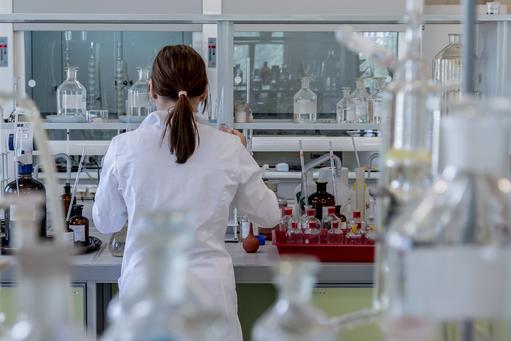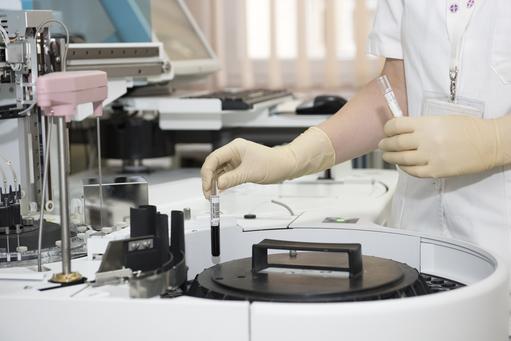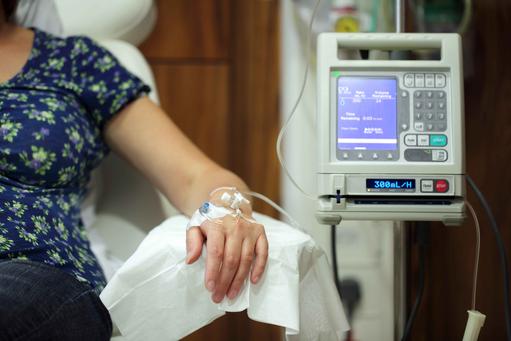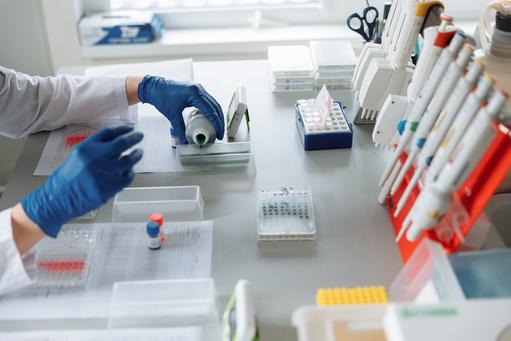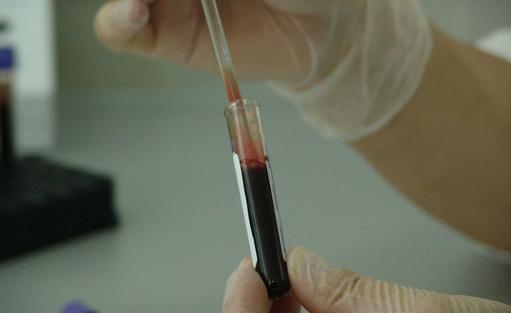- Cancer results when stem cells divide and mutate uncontrollably
- Whether this is predominantly the result of intrinsic or extrinsic factors is unclear
- Some experts say 65% of cancers result from intrinsic factors and are unavoidable
- Other experts say most cancers result from extrinsic factors and are avoidable
- Cancer strategy should not hide behind ‘bad luck’
- Resources need to be allocated more smartly to prevent cancer
Is cancer the result of bad luck and unavoidable, or is it self-inflicted and prevented by simple lifestyles choices? Two 2015 studies arrive at strikingly different conclusions.
One, carried out by researchers from the John Hopkins Kimmel Cancer Centre and published in January 2015 in the journal Science, suggests that two thirds of cancers result from bad luck. Another, carried out by researchers from the Stony Brook Cancer Centre in New York and published in December 2015 in the journal Nature rebuts the findings of the Science paper, and suggests that 70 to 90% of cancer risk is self-inflicted and therefore can be avoided.
Which is right? And, why should this concern us?
Cancer
Cancer is a complex group of diseases characterised by the uncontrolled growth and spread of abnormal cells. If this is not checked it can cause death. Nearly 80% of all cancer diagnoses are in people aged 55 or older. Some facts about cancer In 2015 around 1.7m new cancer cases were diagnosed in the US, and about 330,000 in the UK. Each year, there are some 589,430 cancer deaths in the US, and some 162,000 in the UK. The annual treatment cost of cancer for the US is about $90bn and for the UK about £10bn. The causes of cancer include genetic, and lifestyle factors; certain types of infections; and environmental exposures to different types of chemicals and radiation. Whitfield Growdon, Oncology Surgeon at Massachusetts General Hospital and professor at the Harvard University Medical School describes cancer and the causes of cancer.


The Science paper: cancer is unavoidable
The Science paper found that 65% of cancer cases are a result of bad luck: random DNA mutations in tissue cells during the ordinary process of stem cell division; regardless of lifestyle and hereditary factors. The remaining 35% of cancer cases, say the authors, are caused by a combination of similar mutations and some environmental and hereditary factors. One implication of these findings is that preventative strategies will not make a significant difference to the incidence rates of most adult cancers. So accordingly, the optimal way to reduce adult cancers is early detection when they are still curable by surgery.
Stem cell division is the normal process of cell renewal, but the extent to which random cell mutations contribute to cancer incidence, compared with hereditary or environmental factors, is not altogether clear. This is what the John Hopkins researchers sought to address with their study. Scientists examined 31 tissue types to discover whether the sheer number of cell divisions increases the number of DNA mutations, and therefore make a given tissue more prone to become cancerous.
Researchers developed a mathematical model, which suggested that it is incorrect to assume that cancer may be prevented with “good genes” even though we smoke, drink heavily, and carry excess weight. Their study found that, "the majority [of adult cancer risk] is due to bad luck, that is, random mutations arising during DNA replication in normal, noncancerous stem cells." And, "this is important not only for understanding the disease, but also for designing strategies to limit the mortality it causes," say the researchers.
According to the Science paper bad luck mutations account for 22 of 31 adult cancer types, including ovarian, pancreatic, bone and testicular cancers. The remaining nine, including lung, skin and colorectal cancers, occurred more often than the random mutation rate predicted. This suggests that in these cancers, either inherited genes or environmental factors have a significant influence on cases.
“Our study shows, in general, that a change in the number of stem cell divisions in a tissue type is highly correlated with a change in the incidence of cancer in that same tissue,” says Bert Vogelstein, Clayton Professor of Oncology at the John Hopkins University School of Medicine, and co-author of the study. One example, he says, is in colon tissue, which in humans, undergoes four times more stem cell divisions than small intestine tissue. Likewise, colon cancer is much more prevalent than small intestinal cancer.
In a BBC Radio 4 interview Cristian Tomasetti, co-author of the study said: “Let’s say my parents smoked all their lives, and they never got lung cancer. If I strongly believed cancer was only environment, or the genes that are inherited, then since my parents didn’t get cancer, I may think I must have good genes, and it would be OK to for me to smoke. On the contrary, our study says ‘no’, my parents were just extremely lucky, and played a very dangerous game.”
Related Commentaries
Liquid biopsies to detect pancreatic cancer are near
Full circle in cancer research
Is immunotherapy a breakthrough in cancer treatment?
Is patient engagement the new blockbuster drug?
We should give up trying cure cancer
The Nature paper: cancer is avoidable
In a BBC interview, Yusuf Hannun, Director of the Stony Brook Cancer Center, Joel Strum Kenny Professor of Cancer Research and one of the authors of the Nature paper, challenged the findings of the ‘bad luck’ study. He suggests that hiding behind ‘bad luck’ is like playing Russian roulette with one bullet; one in six will get cancer. "What a smoker does is add two or three more bullets to the revolver and pulls the trigger. Although there is still an element of luck, because not every smoker gets cancer, they have stacked the odds against themselves. From a public health point of view, we want to remove as many bullets as possible from the revolver," says Hannun.
The Nature paper rebuts the John Hopkins ‘bad luck’ thesis. Its lead author, Song Wu, from the Department of Applied Mathematics and Statistics at Stony Brook University, notes that the Science paper had not conducted an alternative analysis to determine the extent to which external risk factors contribute to cancer development, and it assumes that the two variables: intrinsic stem-cell division rates, and extrinsic factors, are independent. “But what if environmental factors affect stem-cell division rates, as radiation is known to do?” asks Wu.
Wu and his colleagues provide an alternative analysis by applying four analytical approaches to the data that were used in the earlier Science paper and arrive at a radically different conclusion: that 70 to 90% of adult cancer cases result from environmental and lifestyle factors, such as smoking, drinking alcohol, sun exposure and air pollution. Wu admits that some rare cancers can result from genetic mutations, but suggest that incidence rates of cancers are far too high to be explained primarily by mutations in cell division.
According to the Nature paper, if intrinsic risk factors did play a key role in cancer development, the total number of divisions in tissue stem cells would correlate with lifetime cancer risk, and the incidence rates of the disease would be less than it actually is. Wu and his colleagues analyzed the same 31 cancer types as in the earlier Science paper, and evaluated the number of stem cell divisions in each. They then compared these rates with lifetime cancer incidence among the same cancer types. This allowed them to calculate the contribution of stem cell division to cancer risk.
Wu et al also pursued epidemiological evidence to further access the contribution of environmental factors to cancer risk. They analyzed previous cancer studies, which show how immigrants moving from regions of low cancer incidence to regions with high cancer incidence soon develop the same tumor rates, suggesting that the risks are environmental rather than biological or genetic.
The researchers’ findings suggest that mutations during cell division rarely accumulate to the point of producing cancer, even in tissues with relatively high rates of cell division. In almost all cases, the Nature paper found that some exposure to carcinogens or other environmental factors would be needed to trigger disease, which again suggested that the risks of the most prevalent adult cancers are due to environmental factors. For example, 75% of the risk of colorectal cancer is due to diet, 86% per cent of the risk of skin cancer is due to sun exposure, and 75% of the risk of developing head and neck cancers is due to tobacco and alcohol.
The Nature paper concludes that bad luck, or intrinsic factors, only explain 10 to 30% of cancer cases, while 70 to 90% of adult cancer cases result from environmental and lifestyle factors. "Irrespective of whether a subpopulation or all dividing cells contribute to cancer, these results indicate that intrinsic factors do not play a major causal role," say the authors. This suggests that many adult cancers may be more preventable than previously thought.
Preventing cancer
Even the Science study concedes that extrinsic factors play a role in 35% of the most common adult cancers, including lung, skin and colorectal cancers. This, together with the Nature study, and the rising incidence of avoidable cancers, should be a wake-up call because a substantial proportion of cancers can be prevented.
Hannun is right! Whatever the causes of cancer, we should not ‘hide behind bad luck’. We should act on evidence, which suggests that it is within everyone’s capabilities to make simple lifestyle changes that can prevent common adult cancers. Although maintaining a healthy lifestyle is no guarantee of not getting cancer, the Nature paper underlines the fact that a healthy lifestyle stacks the odds in your favor. The paper supports preventative cancer strategies.
In 2015, tobacco smoking caused about 171,000 of the estimated 589,430 cancer deaths in the US. The Nature paper suggests that the overwhelming majority of these could have been prevented. In addition, the World Cancer Research Fund has estimated that up to 33% of the cancer cases that occur in developed countries are related to being overweight or to obesity, physical inactivity, and/or poor nutrition, and thus could also be prevented.
It seems reasonable to suggest that the risk of cancer can be significantly reduced by: (i) a cessation of smoking, (ii) drinking less alcohol, (iii) protecting your skin from the sun, (iv) eating healthily, (v) maintaining a healthy weight, and (vi) exercising regularly.
The UK Position
Everyone understands the enormity of the burden of cancer, and what to do to reduce its risk. In the UK, as in other wealthy countries, there is no lack of money, no lack of resources, and no lack of expertise for cancer care. The annual spend on cancer diagnosis and treatment alone in the UK is about £10 billion. The UK also has a government appointed Cancer Czar charged with producing a national cancer plan to bring Britain's cancer survival rates up to those of European levels. Despite our understanding and all these resources, a 2014 study published in the Lancet suggests that cancer survival rates in the UK still lag more than 20 years behind many other European countries, and that people are dying needlessly. Why is this?
Fear of preventative medicine
Writing in The Times in January 2016, Sir Liam Donaldson, a former UK Chief Medical Officer, suggested that although preventative healthcare strategies are vital “to provide safe, high quality care without running out of money”, governments avoid helping the public to mitigate the risks of modern living, which can cause cancer, because of “two primal political forces: the mortal dread of being labeled a ‘nanny state’, and a fear of removing people’s perceived pleasures.”
During Donaldson’s tenure between 1998 and 2010, the government rejected his recommendation for a minimum unit price for alcohol, and for the same reasons in 2014, the government rejected a tax on sugar recommended by Public Health England. Excess sugar increases the risk of cancer, heart disease and diabetes. According to Donaldson, without effective government action to lower the vast and escalating burden of cancer, and other chronic diseases, the NHS is unsustainable.
The missing link in preventative strategies is behavioral techniques that engage people who are at risk and help them change their behaviors. Such techniques have been demonstrated to be successful in both the UK and US. They explain how people behave, and encourage them to reduce unhelpful influences on their health, and change the way they think and act about important health-related issues such as diets, lifestyles, screenings and medication-management. See: Behavioral Science provides the key to reducing diabetes
Takeaway
It is crucial that the UK government now embraces behavioral techniques to curb the curse of cancer. Donaldson is right: if cancer, and other chronic diseases, which together consume the overwhelming percentage of healthcare expenditure, are not prevented the NHS will become unsustainable.
|


